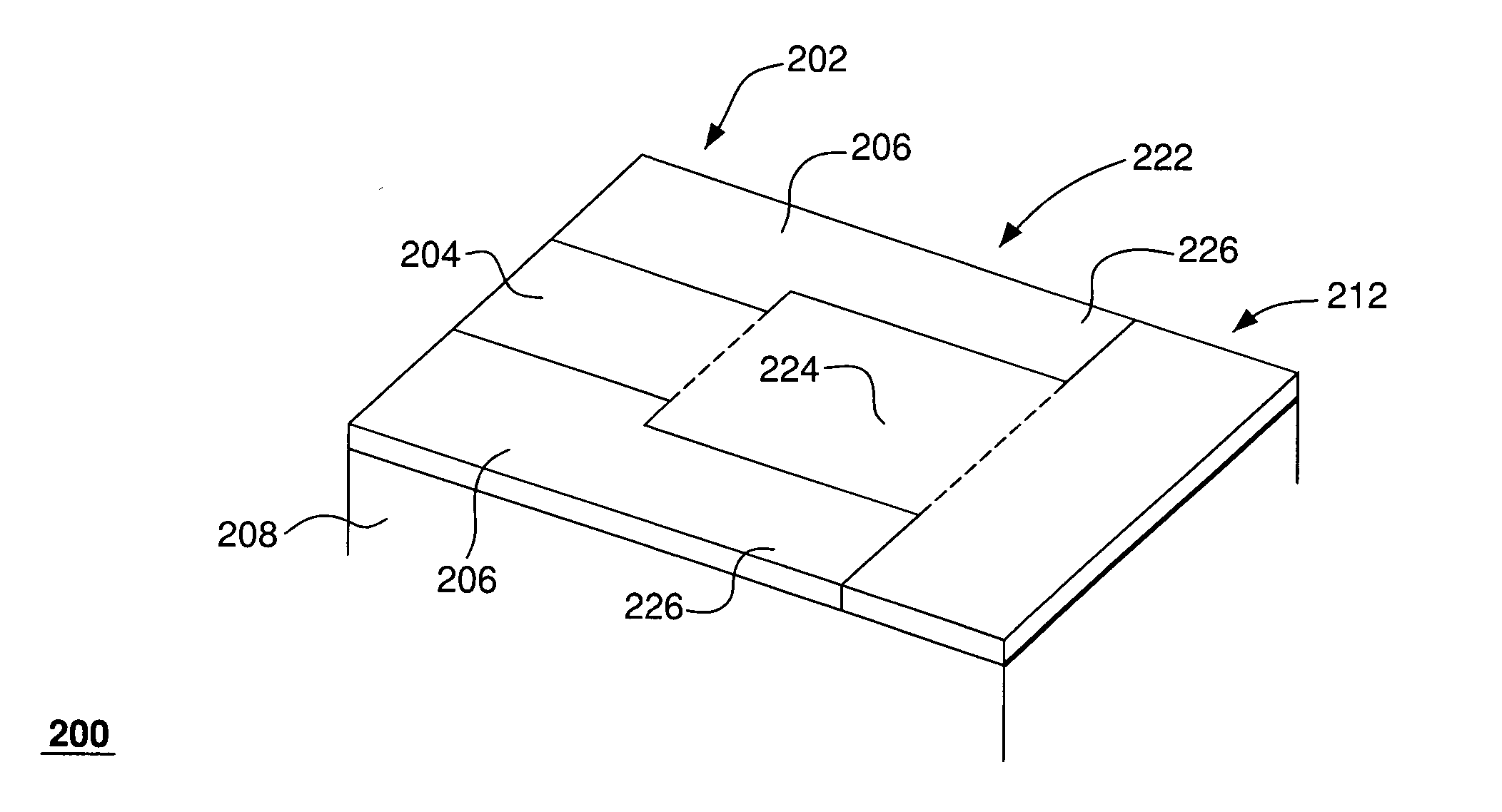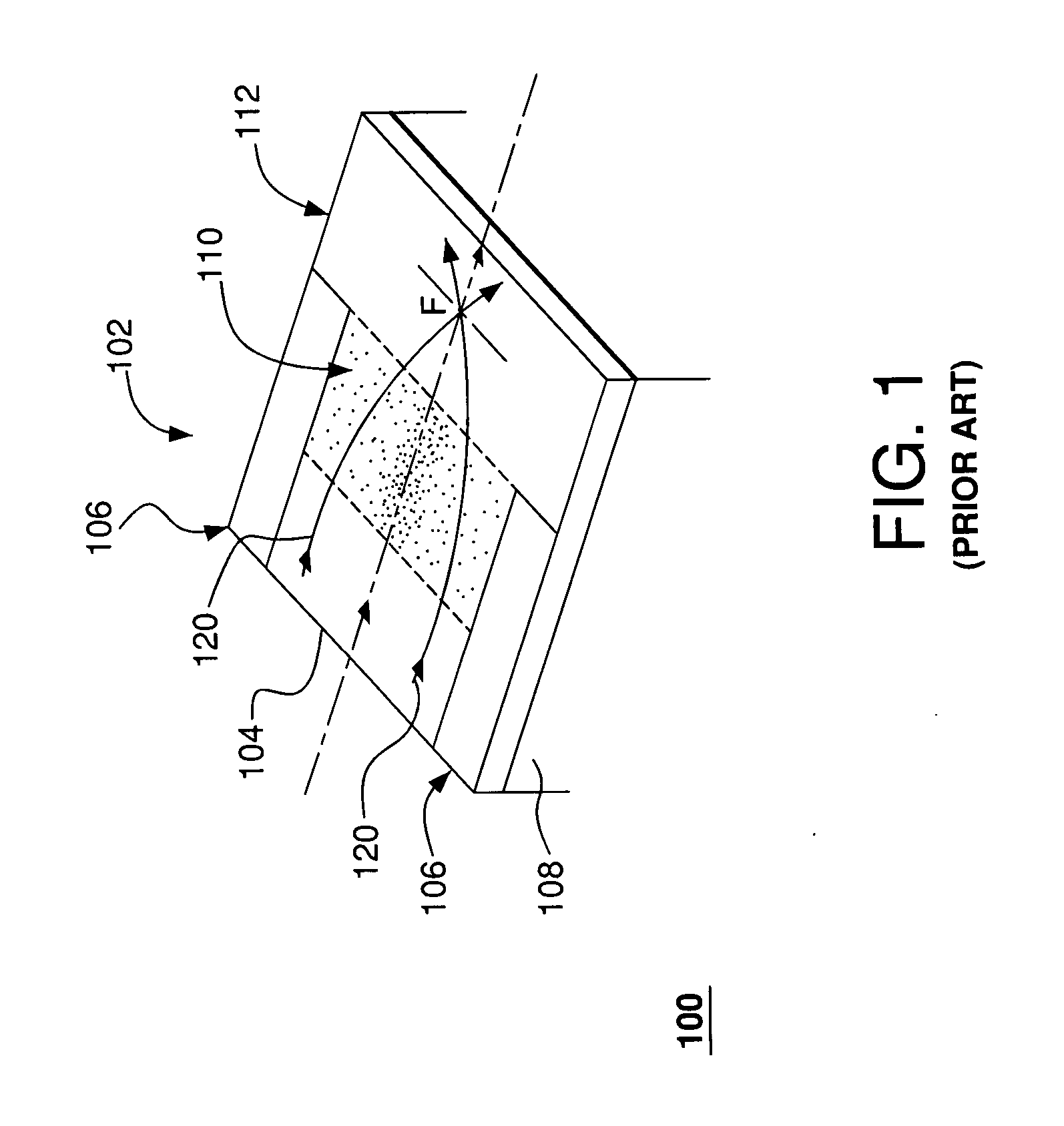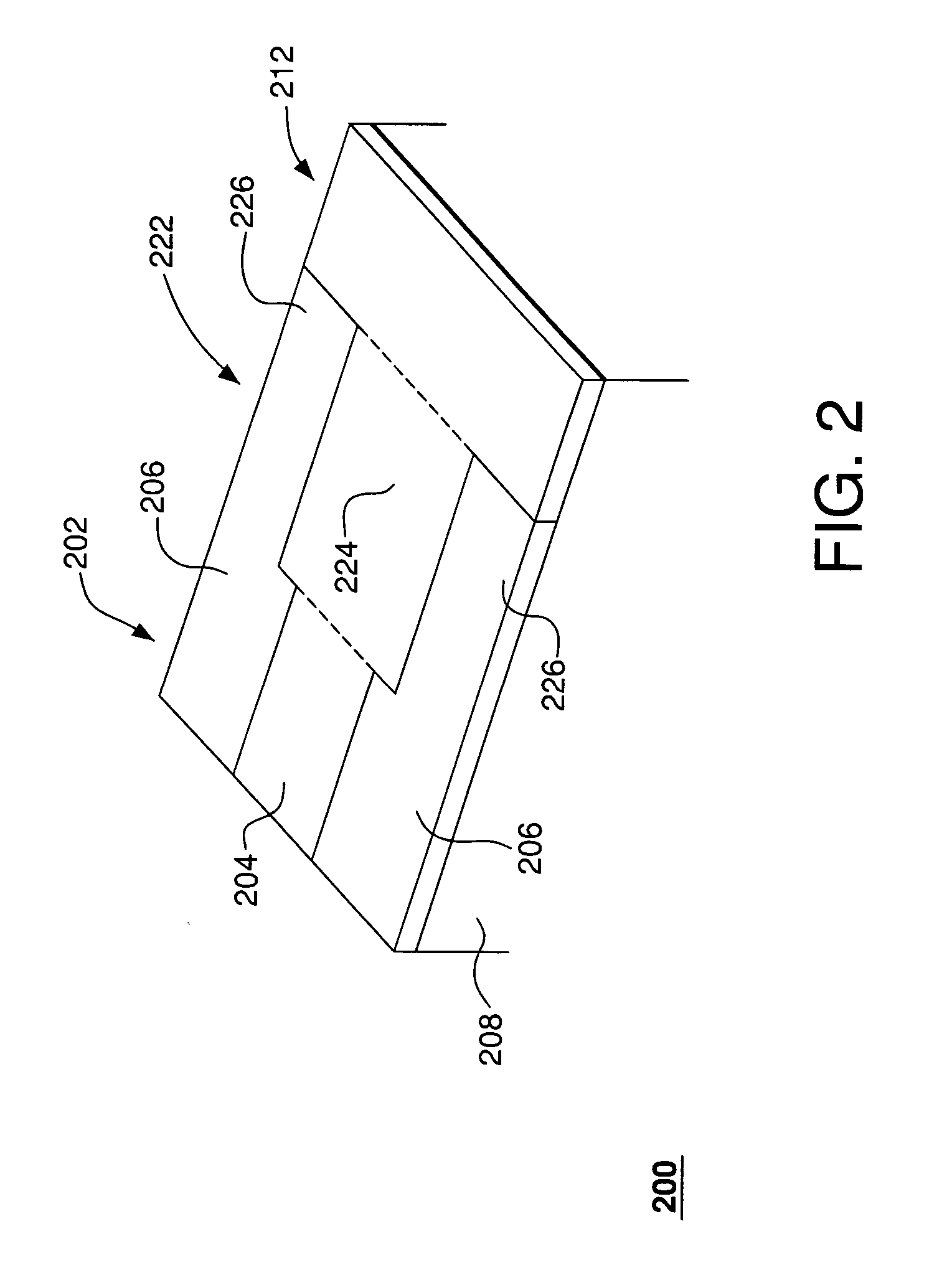Waveguide lens with multimode interference
a waveguide and interference technology, applied in the field of optical communication equipment, can solve the problems of difficult task of creating thickness profiles accurately representing the desired index of refraction distribution, and the inability to incorporate waveguide lenses similar to lenses b>110/b> into waveguide devices designated for large-scale production,
- Summary
- Abstract
- Description
- Claims
- Application Information
AI Technical Summary
Benefits of technology
Problems solved by technology
Method used
Image
Examples
Embodiment Construction
[0024] Reference herein to “one embodiment” or “an embodiment” means that a particular feature, structure, or characteristic described in connection with the embodiment can be included in at least one embodiment of the invention. The appearances of the phrase “in one embodiment” in various places in the specification are not necessarily all referring to the same embodiment, nor are separate or alternative embodiments mutually exclusive of other embodiments.
[0025]FIG. 2 shows a three-dimensional perspective view of an optical device 200 according to one embodiment of the present invention. Device 200 is analogous to device 100 of FIG. 1 and includes a first planar waveguide 202 coupled to a second planar waveguide 222, the latter coupled to a slab region 212. Each waveguide has a core region and two adjacent cladding regions formed on a substrate 208. In particular, waveguide 202 has core region 204 and cladding regions 206, and waveguide 222 has core region 224 and cladding regions...
PUM
 Login to View More
Login to View More Abstract
Description
Claims
Application Information
 Login to View More
Login to View More - R&D
- Intellectual Property
- Life Sciences
- Materials
- Tech Scout
- Unparalleled Data Quality
- Higher Quality Content
- 60% Fewer Hallucinations
Browse by: Latest US Patents, China's latest patents, Technical Efficacy Thesaurus, Application Domain, Technology Topic, Popular Technical Reports.
© 2025 PatSnap. All rights reserved.Legal|Privacy policy|Modern Slavery Act Transparency Statement|Sitemap|About US| Contact US: help@patsnap.com



